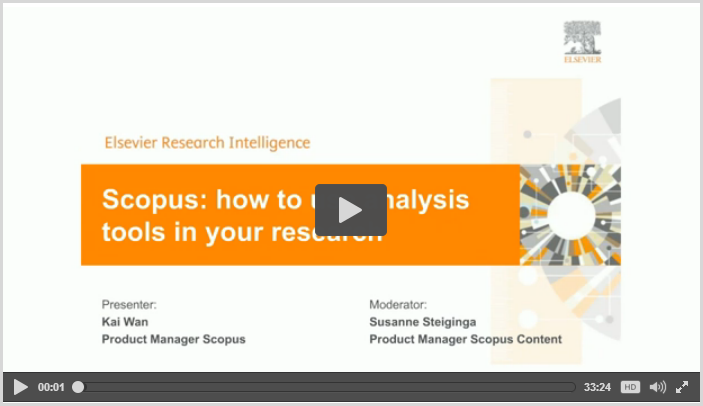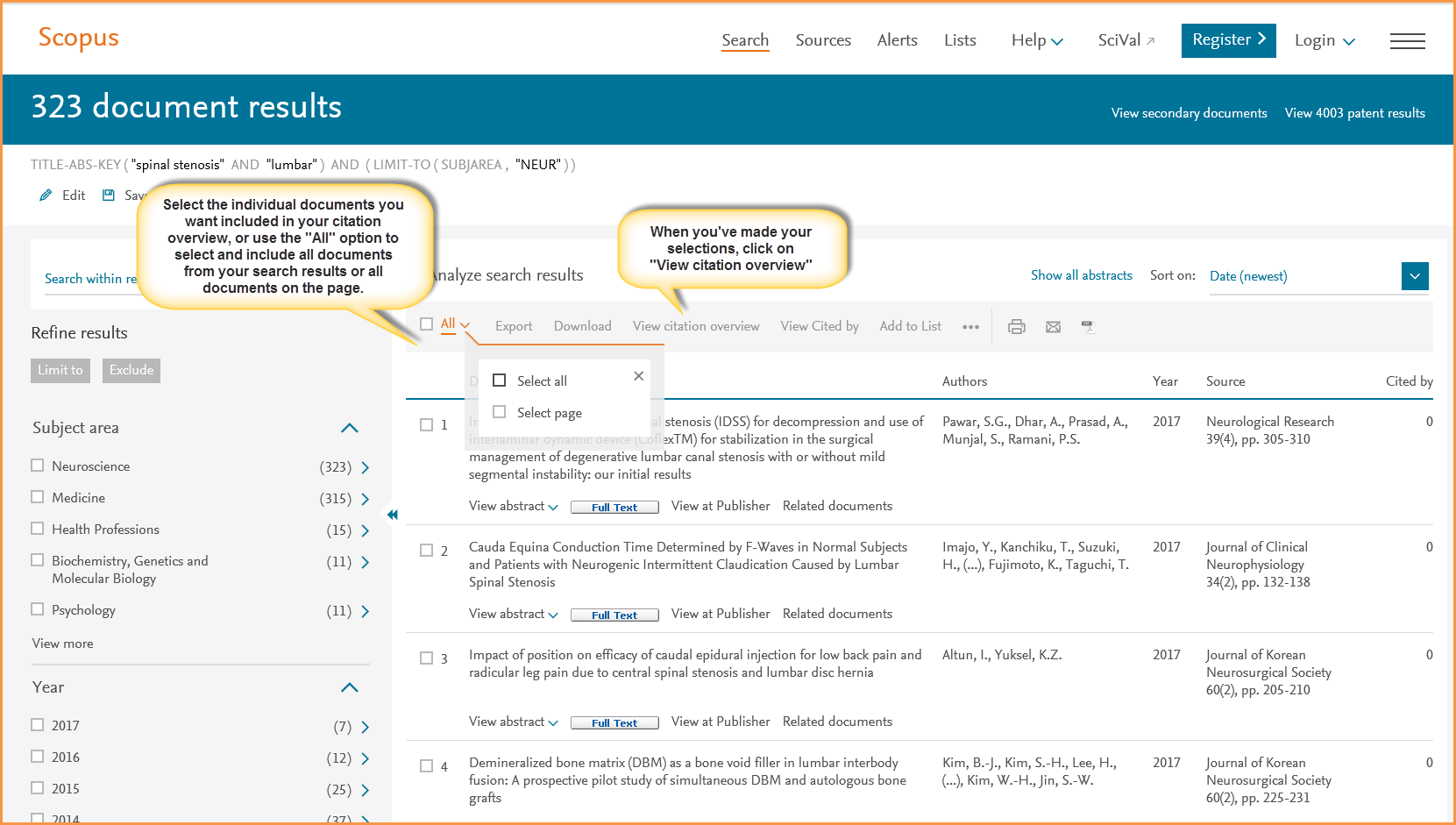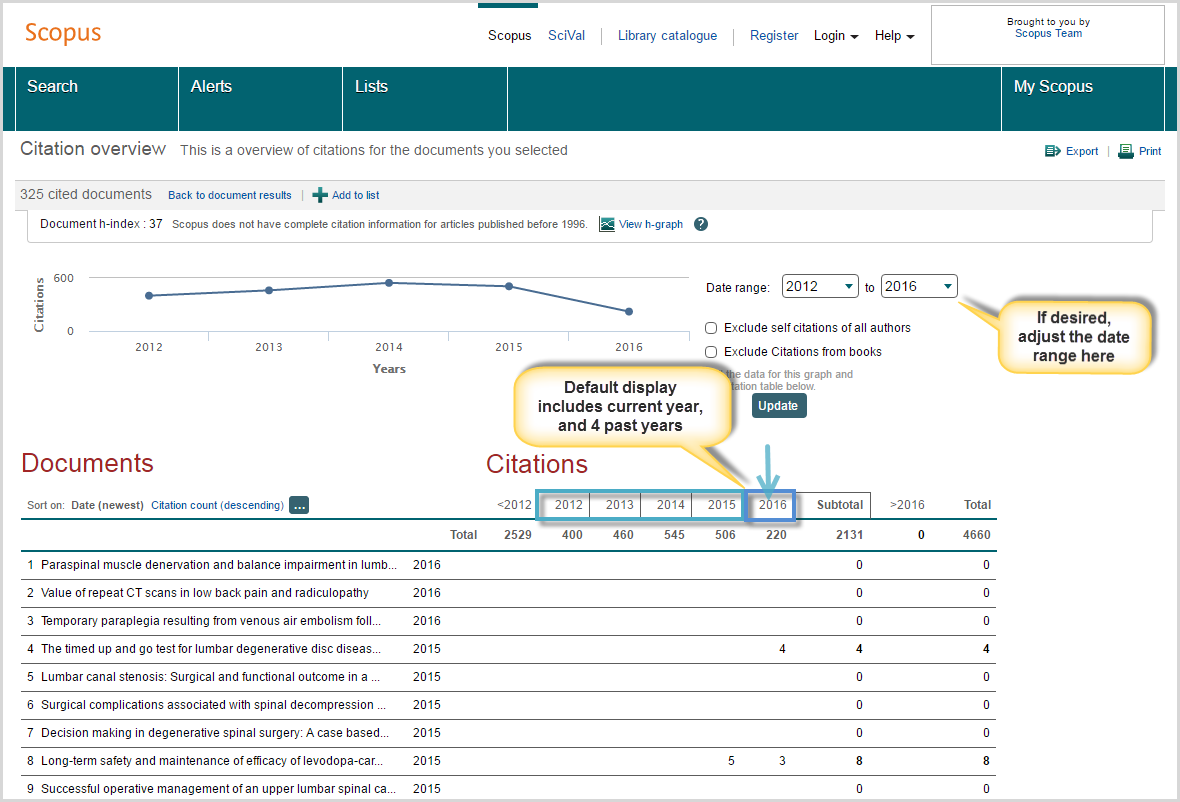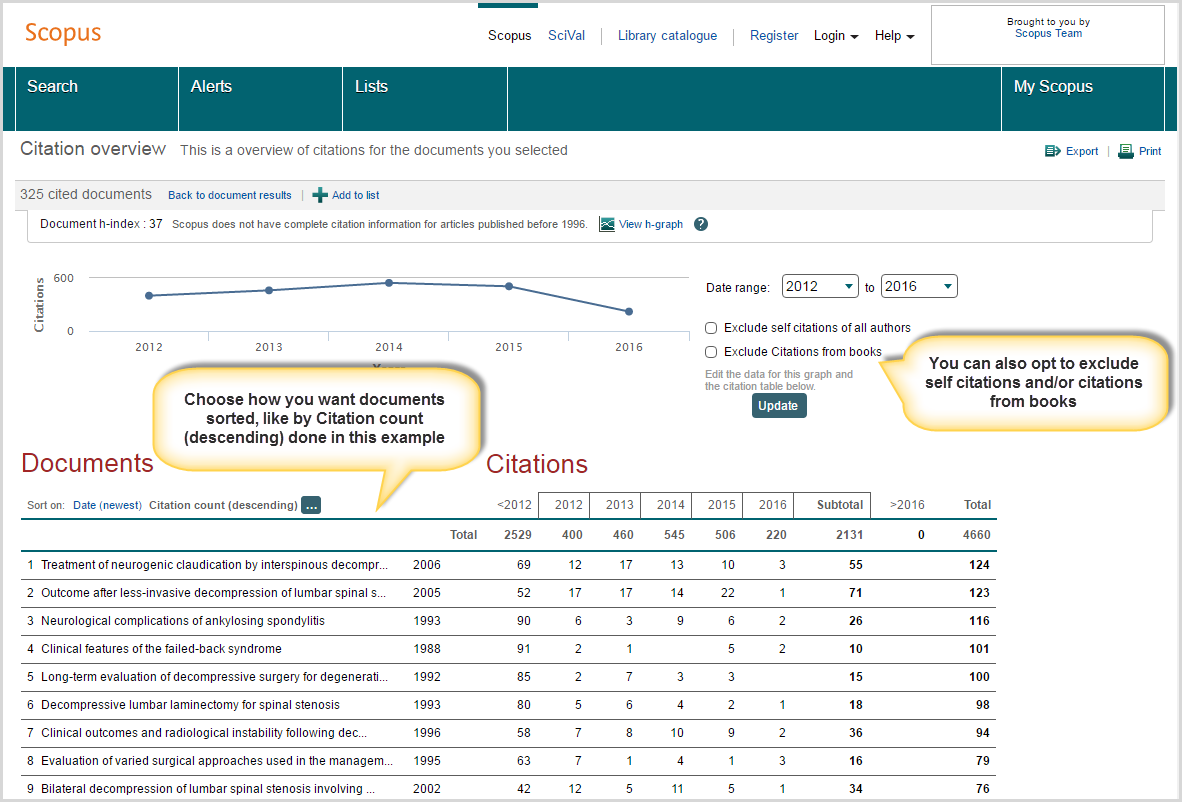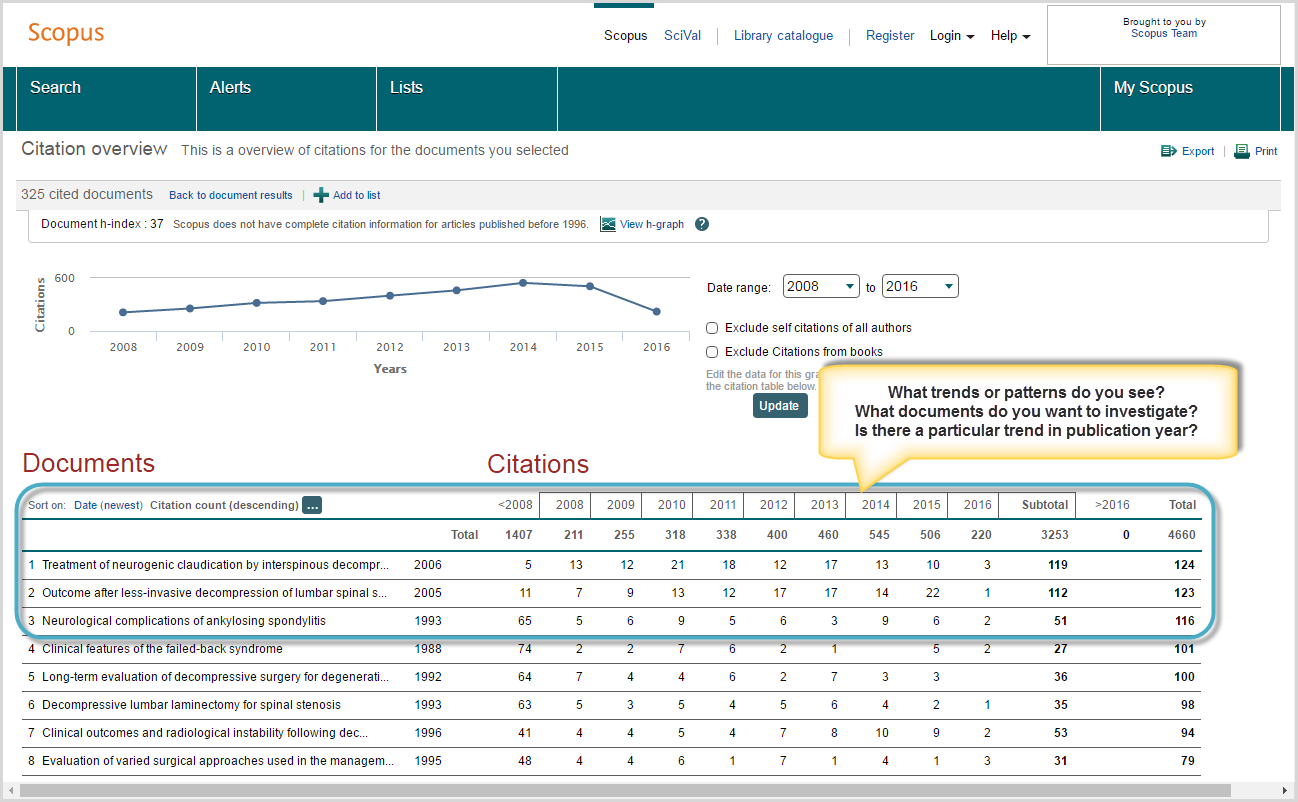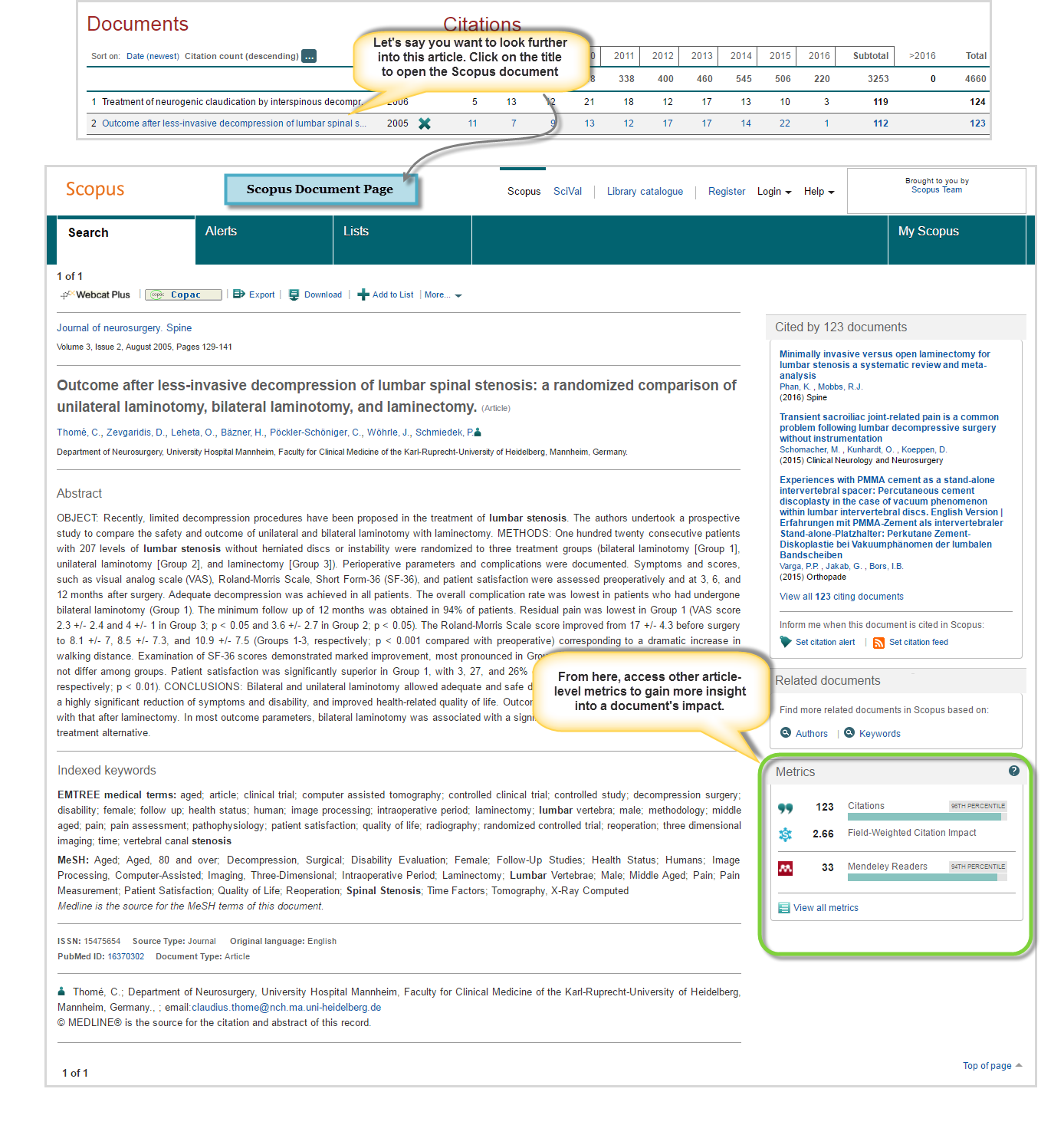Five steps to creating a citation overview in Scopus
In this Scopus Webinar, Scopus Product Manager, Kai Wan, joined us to share some best practices on how to use Scopus analysis tools in your research. Based on minutes 00:11:03–00:15:18 of his presentation, this tip & trick shares why and how to use the Scopus Citation overview tool.
The Scopus Citation Overview tool offers an interactive way to:
- View the citation trend for a set of documents
- Find all publications citing a specific document (or set of documents), and
- Discover the overall impact of publications in a research area.
Before creating a Citation Overview, here are 2 key points to remember:
- To use the interactive table within Scopus, select no more than 2,000 items at a time.
- If you want to analyze a results list >2,000 (and up to 20,000),you will be prompted to request a direct export and receive the information as a .csv file
Tip: It is best to first improve the accuracy of your results set before creating a citation overview. To do this, use the refine results panel from your search results page in tandem with the ‘Analyze results tool,’ and isolate the data you want to analyze (also watch minutes 00:27:15–00:34:00 from our webcast "Scopus: Search tips to make you search more effective" which specifically covers how to refine Scopus search results).
Now, to create a Citation Overview, follow these 5 steps:
- From your Scopus search results, narrow down your results the best you can, ideally to less than 2,000 items.
- Select what you want included in your analysis. You can choose to include particular documents you select individually or click on "All" to select all results or just results from the page. Once you've made your selections, click the ‘View Citation Overview’ link.
- The Citation Overview tool will display the citation information for each document you selected from your results list. Citations from the current year, along with the 4 preceding years, are automatically included in the table. If desired, you can adjust which years to display.
- You can also further modify the table by choosing whether to exclude self-citations or citations from books, in addition to specifying how you want documents sorted.
- Now you can begin studying the information and continue manipulating the chart to help pinpoint key research you want to investigate further, or use the information to identify trends in a particular research area.
3 examples of how you might use the information from a Citation Overview:
- Look through the citation history for the set of documents and identify citation patterns over the past 4 years, 10 years, etc. For example, is there a particular document that shows a sudden spike in the number of citations? Is there a particular year when citations really pick up, or decline? Use your observations to get a picture of what is happening in a particular research area and then delve deeper into the information.
- Identify documents with a high citation impact and then use the article Metrics module, accessible from the document home page, to analyze that impact. From the Citation Overview table, click on a document title.This opens the Scopus document page. Here you will find the Metrics module on the right-hand side of the page.The module provides article-level metrics like ‘Field-Weighted Citation Impact’ or ‘Mendeley readership’ statistics to help assess an article’s research impact.
- Follow the chain of citations for a particular document, or from a particular year; click on the number in the citation overview table. This can lead you to other key studies that you want to further investigate.
In addition to the Citation Overview, Kai’s 30 minute session covers 3 more analytic tools. Watch the full recorded webcast to also learn about these helpful tools:
- Analyze results: Understand and refine your search results based on 7 parameters graphically displayed and easy to manipulate
- Compare journals: Analyze overall journal performance, compare journals to each other and find the best journals to publish in
- Author Profile Analysis: Review your own research performance, asses how your peers are performing and evaluate existing or potential collaborators (co-authors)


